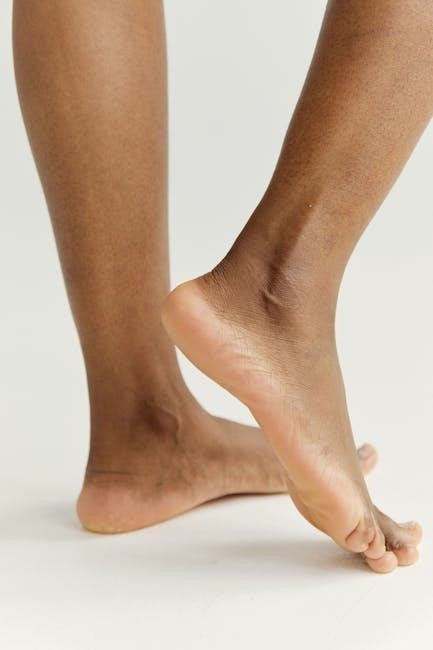Overview of “Anatomy & Physiology: An Integrative Approach”
This comprehensive textbook by Michael McKinley‚ Valerie O’Loughlin‚ and Theresa Bidle provides an in-depth study of human anatomy and physiology‚ emphasizing their interconnectedness. It is widely used in health and life sciences education and is available in both print and digital formats‚ including PDF.
Anatomy & Physiology: An Integrative Approach is a comprehensive textbook designed to bridge the gap between anatomy and physiology‚ offering a holistic understanding of the human body. It emphasizes how systems interact to maintain homeostasis and overall health. Written for students and professionals‚ the book combines detailed explanations with visual aids to simplify complex concepts. Its integrative approach makes it a valuable resource for both education and clinical practice.
1.2 Authors and Publication Details
Anatomy & Physiology: An Integrative Approach is authored by David Shier‚ Jackie Butler‚ and Ricki Lewis. Published by Pearson‚ the book is widely recognized for its clarity and depth. The 4th edition‚ released in 2021‚ incorporates updated research and learning tools‚ making it a trusted resource for students and professionals in the health sciences.
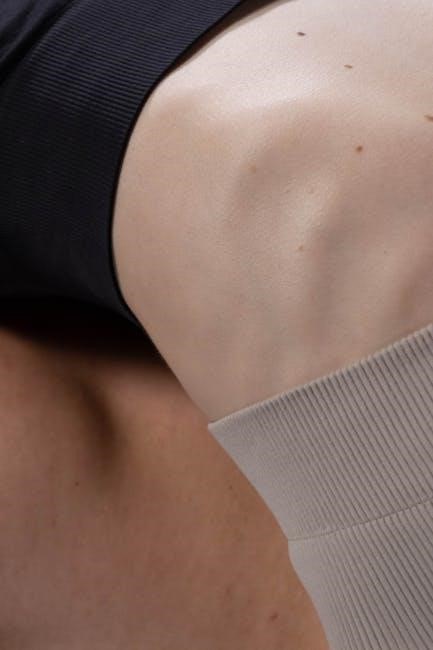
Key Features of the Book
The book offers an integrative approach‚ connecting anatomy and physiology through dynamic systems. It features comprehensive coverage‚ visual aids‚ and clinical examples‚ enhancing learning clarity and engagement.
2.1 Integrative Approach to Anatomy and Physiology
The book’s integrative approach seamlessly connects anatomy and physiology‚ showing how body systems interact. This method helps in understanding how changes in one system affect others‚ which is vital for clinical applications. By providing a unified view‚ it clarifies complex processes and enhances learning through practical examples and dynamic visual aids‚ making complex concepts engaging and accessible for students.
2.2 Comprehensive Coverage of Body Systems
The book provides an in-depth exploration of all major body systems‚ including the skeletal‚ muscular‚ nervous‚ circulatory‚ respiratory‚ digestive‚ endocrine‚ urinary‚ and reproductive systems; Each chapter is dedicated to the structure‚ function‚ and regulation of these systems‚ ensuring a thorough understanding of their roles and interconnections. The detailed explanations and visual aids help learners grasp the complexity of human anatomy and physiology effectively.
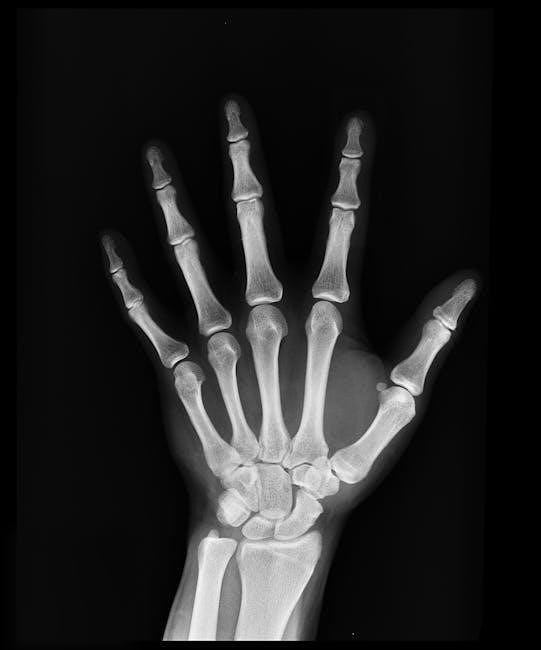
Editions of the Book
The book is available in multiple editions‚ with the 4th edition being the latest‚ published by Pearson. Each edition offers updated content and improved features.
3.1 4th Edition Details
The 4th edition of Anatomy & Physiology: An Integrative Approach was published by Pearson‚ offering enhanced content and improved visuals. It includes updated research‚ expanded clinical applications‚ and refined digital tools. The edition emphasizes active learning with interactive simulations and quizzes‚ while maintaining its integrative approach to understanding human physiology. It remains a popular choice for both students and educators in the field.
3.2 3rd Edition Highlights
The 3rd edition of Anatomy & Physiology: An Integrative Approach introduced enhanced illustrations and expanded clinical examples. It focused on simplifying complex topics while maintaining scientific accuracy. The edition included updated case studies and a companion CD-ROM with interactive tools. Its clear‚ balanced approach made it a favorite among students and educators‚ ensuring a deep understanding of anatomical and physiological concepts.

Topics Covered in the Book
The book covers foundational topics such as body organization‚ homeostasis‚ cell biology‚ and tissue types. It explores the structure and function of all major body systems.
4.1 Body Organization and Homeostasis
The book begins with the basics of body organization‚ exploring hierarchical structure from cells to systems. It emphasizes homeostasis‚ explaining how the body maintains internal balance through feedback mechanisms. Key concepts include the levels of organization‚ tissues‚ and organ systems‚ providing a solid foundation for understanding anatomy and physiology.
4.2 Cell Biology and Tissue Types
The book delves into cell biology‚ covering cell structure‚ function‚ and organelles. It explains membrane transport‚ signaling‚ and the cell cycle. The section also explores the four primary tissue types: epithelial‚ connective‚ muscle‚ and nervous. Each tissue’s characteristics‚ functions‚ and roles in forming organs are discussed‚ providing a clear understanding of how cells integrate into larger functional units.
Importance of an Integrative Approach
An integrative approach connects anatomy and physiology‚ highlighting how body systems interact. This method enhances understanding of complex processes and their real-world applications in healthcare and disease diagnosis.
5.1 Understanding Dynamic Relationships Between Systems
The integrative approach emphasizes how body systems interact dynamically‚ ensuring proper bodily functions. This understanding is crucial for maintaining homeostasis and addressing health issues effectively. By exploring these relationships‚ learners gain insights into how systems like the nervous and circulatory systems collaborate to regulate processes such as blood pressure and oxygen delivery. This interconnected view simplifies complex physiological concepts and enhances problem-solving skills in both academic and clinical settings.
Such an approach also highlights how disturbances in one system can impact others‚ providing a holistic perspective on human physiology. This fosters a deeper appreciation of the body’s intricate design and its ability to adapt to internal and external changes. Understanding these dynamic relationships is essential for both students and healthcare professionals seeking to diagnose and treat conditions effectively.
5.2 Clinical Applications and Examples
The integrative approach in anatomy and physiology is invaluable in clinical settings‚ offering insights into diagnosing and treating conditions. For instance‚ understanding the interplay between the nervous and endocrine systems aids in managing diabetes‚ where nerve damage (neuropathy) and hormonal imbalances coexist. Similarly‚ recognizing how the cardiovascular and respiratory systems interact is essential for addressing conditions like heart failure and chronic obstructive pulmonary disease (COPD).
By integrating anatomical and physiological knowledge‚ healthcare professionals can better identify the root causes of symptoms and develop targeted therapies. This holistic perspective enhances patient care and underscores the practical relevance of an integrative approach in real-world medical scenarios.
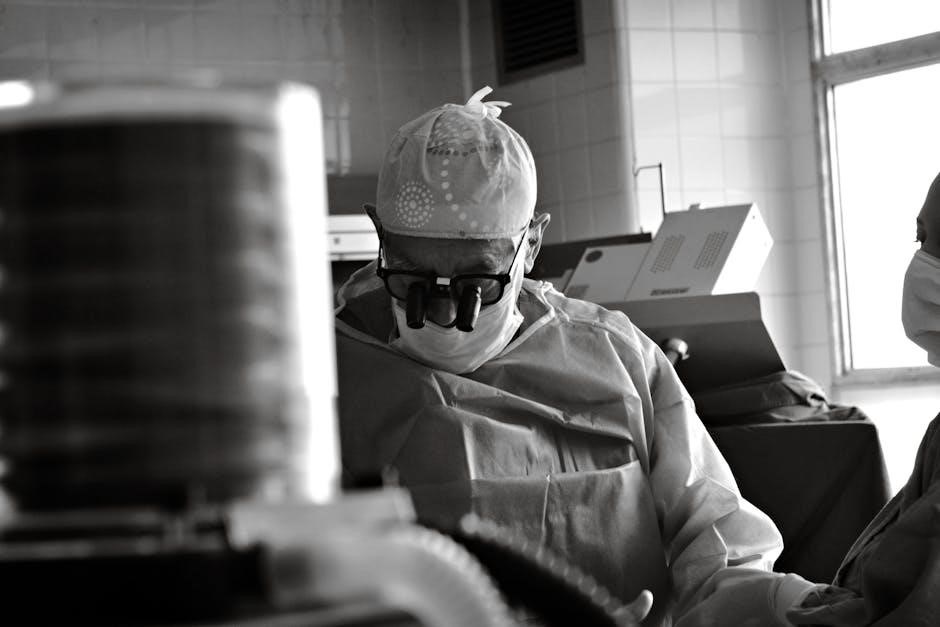
Study Tools and Resources
The book offers digital tools like interactive quizzes‚ flashcards‚ and 3D models‚ along with a companion lab manual for hands-on learning‚ enhancing student engagement and retention.
6.1 Digital and eTextbook Options
The book is available as an eTextbook‚ offering flexible access on various devices. Digital features include interactive quizzes‚ flashcards‚ and 3D models‚ enhancing learning. Offline access ensures convenience for students without internet. Compatible with popular platforms‚ the eTextbook supports highlighting and note-taking‚ making it a valuable resource for anatomy and physiology studies.
6.2 Accompanying Lab Manual
The lab manual complements the textbook with hands-on activities‚ dissection guides‚ and histology slides. It includes exercises to reinforce key concepts‚ such as identifying structures and understanding physiological processes. The manual aligns with the textbook chapters‚ offering practical applications of integrative anatomy and physiology. Additional online resources‚ like virtual labs‚ enhance interactive learning experiences.
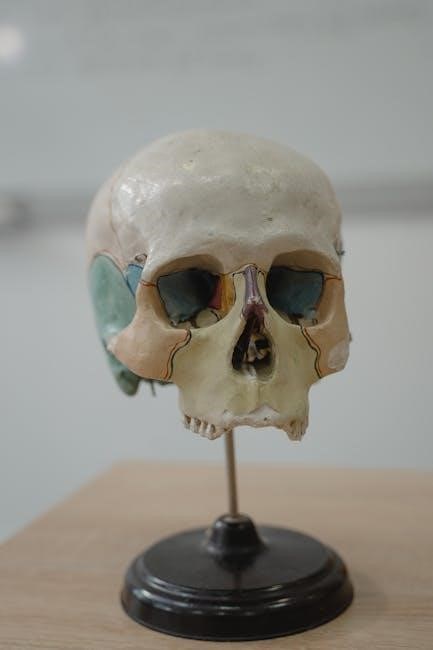
Availability of the Book in PDF Format
The book is widely available in PDF format through official sources like the publisher’s website‚ Amazon‚ and Google Books. Purchase or subscription may be required.
7.1 Sources for Downloading the PDF
The PDF version of Anatomy & Physiology: An Integrative Approach can be downloaded from the publisher’s official website‚ Amazon‚ Google Books‚ or eBook platforms like eBooks.com. Some sources may require purchase or subscription. Unauthorized free downloads from third-party sites are illegal and unethical‚ potentially containing malware. Always opt for reputable sources to ensure quality and legality.
7.2 Legal and Ethical Considerations
Downloading or distributing the PDF of Anatomy & Physiology: An Integrative Approach without proper authorization violates copyright laws. Purchasing the book or accessing it through legal platforms ensures compliance with ethical standards and supports authors and publishers. Unauthorized sharing or downloading from pirated sites is illegal and undermines the intellectual property rights of creators.

Challenges in Anatomy and Physiology Education
Complexity of subject matter and vast information retention pose significant challenges. Students often struggle with integrating concepts‚ while educators face engaging diverse learners effectively.
8.1 Complexity of the Subject Matter
Anatomy and physiology are intricate‚ requiring students to grasp vast‚ interconnected concepts. The dynamic interactions between body systems and cellular processes pose challenges. Complex terminology‚ spatial relationships‚ and abstract ideas like homeostasis further complicate learning. These factors demand engaging teaching methods and effective study strategies to help students master the material successfully.
8.2 Need for Interactive Learning Tools
Interactive learning tools are essential for anatomy and physiology education‚ as they help students visualize complex structures and processes. Features like 3D models‚ virtual labs‚ and simulations enhance understanding. These tools engage learners‚ promote active participation‚ and simplify difficult concepts‚ making them invaluable for mastering the subject.
Integrating Anatomy and Physiology in Modern Education
The book bridges gaps between disciplines‚ connecting anatomy and physiology to medicine‚ health sciences‚ and biotechnology. Its integrative approach aligns with modern educational trends‚ fostering holistic understanding.
9.1 Interdisciplinary Connections
The book connects anatomy and physiology with medicine‚ health sciences‚ and biotechnology‚ illustrating their roles in real-world applications. This integration supports career development across healthcare professions and research‚ aligning with modern educational trends that emphasize holistic understanding and interdisciplinary learning.
9.2 Role in Health and Life Sciences
The book plays a vital role in health and life sciences by providing foundational knowledge of human structure and function. It supports fields like medicine‚ nursing‚ and healthcare‚ offering insights into disease mechanisms and treatment strategies. The text also aids in understanding genetics‚ pharmacology‚ and biotechnology‚ making it essential for advancing research and practical applications in health sciences.

Practical Applications of the Book
The book serves as a valuable resource for students‚ educators‚ and healthcare professionals‚ aiding in understanding complex anatomical and physiological concepts and their practical healthcare applications.
10.1 For Students and Educators
The book provides students with a comprehensive understanding of anatomy and physiology‚ offering an integrative approach that simplifies complex concepts. Educators benefit from its structured framework‚ which aligns with course curricula‚ enhancing teaching effectiveness. Visual aids and study tools support both individual study and classroom instruction‚ fostering an engaging and effective learning environment.
10.2 For Healthcare Professionals
The book serves as a valuable resource for healthcare professionals‚ offering a detailed understanding of human anatomy and physiology. It aids in diagnosing and treating conditions by highlighting how body systems interact. The clinical examples and integrative approach help professionals apply anatomical knowledge in real-world patient care scenarios‚ enhancing their practice and decision-making skills.
Evolution of the Book Over Editions
The book has evolved significantly‚ with each edition incorporating new scientific discoveries and improved pedagogical tools to enhance learning and clarity for students and educators alike.
11.1 Changes in Content and Structure
Each edition of “Anatomy & Physiology: An Integrative Approach” reflects updates in scientific knowledge and educational methods. Content has expanded to include emerging topics‚ while structural improvements enhance readability. Chapters are reorganized for better flow‚ and additional visual aids are incorporated to support comprehension. These changes ensure the book remains relevant and effective for modern learners.
11.2 Updates in the 4th Edition
The 4th edition of “Anatomy & Physiology: An Integrative Approach” includes updated research findings‚ enhanced illustrations‚ and expanded digital resources. New chapters focus on emerging topics like regenerative medicine and precision health. Interactive simulations and quizzes have been added to the online platform‚ improving student engagement and understanding of complex physiological processes.
The Role of Visual Aids in Learning
Visual aids like diagrams and illustrations simplify complex anatomical structures‚ enhancing comprehension and retention for students studying anatomy and physiology.
12;1 Illustrations and Diagrams
The book uses detailed illustrations and diagrams to visually represent anatomical structures and physiological processes‚ aiding students in understanding complex concepts. Color-coded elements and layered diagrams help users focus on specific details‚ while realistic images enhance retention. These visuals are particularly useful for healthcare professionals needing to apply anatomical knowledge in clinical settings‚ making them an essential tool for both education and practice.
12.2 Interactive Digital Features
The digital version of the book includes interactive features like quizzes‚ videos‚ and 3D models‚ enhancing engagement and understanding. These tools allow students to explore anatomical structures dynamically and test their knowledge through practice questions. The interactive elements cater to diverse learning styles‚ making complex topics more accessible and fostering a deeper grasp of anatomy and physiology concepts.
The Future of Anatomy and Physiology Education
The future focuses on integrating advanced technologies and personalized learning to enhance understanding‚ making anatomy and physiology education more interactive and accessible for diverse learners.
13.1 Technological Advancements
Technological advancements‚ such as 3D modeling‚ virtual reality‚ and AI-driven platforms‚ are revolutionizing anatomy and physiology education. These tools enable immersive‚ interactive learning experiences‚ making complex concepts more accessible. Integrative digital resources‚ like the “Anatomy & Physiology: An Integrative Approach” PDF‚ offer dynamic visualizations and real-time data analysis‚ enhancing student engagement and understanding of human body systems.
13.2 Personalized Learning Experiences
Personalized learning experiences are enhanced through adaptive tools that cater to individual student needs. The “Anatomy & Physiology: An Integrative Approach” PDF offers interactive simulations and quizzes‚ allowing learners to tailor their study pace. Real-time feedback and customizable pathways ensure a deeper understanding of complex topics‚ fostering a more engaging and effective learning environment for students.
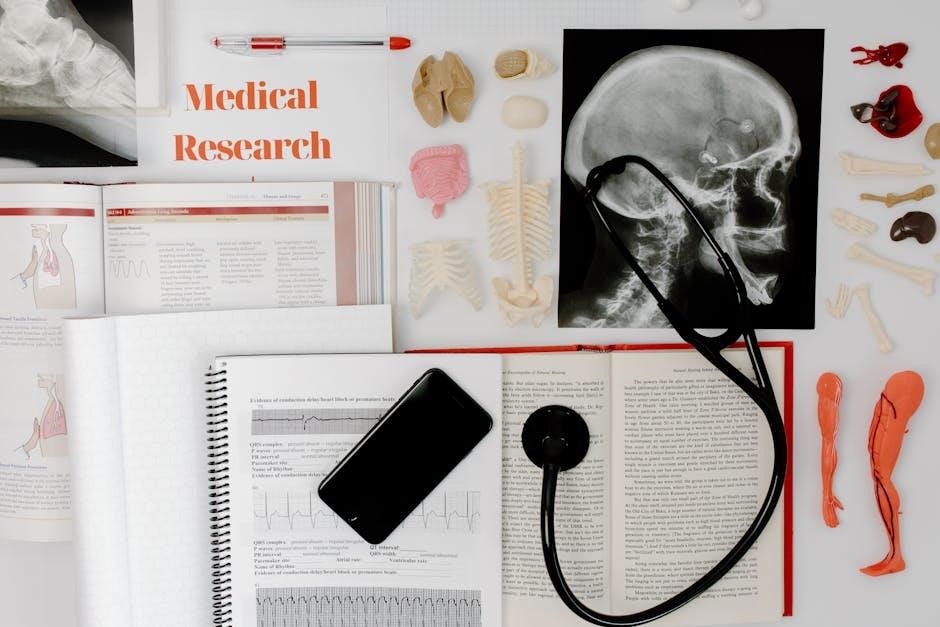
Study Strategies for Anatomy and Physiology
Active learning techniques‚ spaced repetition‚ and interactive activities enhance comprehension. Utilize flashcards‚ concept maps‚ and practice quizzes to reinforce complex concepts and improve retention effectively.
14.1 Effective Use of the Textbook
Maximize learning by following the textbook’s structured approach. Focus on chapter objectives‚ summaries‚ and review questions. Use visual aids like diagrams and tables to reinforce concepts. Apply the integrative approach by linking related chapters‚ ensuring a cohesive understanding of anatomy and physiology. Regularly reference the glossary and appendices for clarification and additional resources to enhance retention and comprehension.
14.2 Supplemental Resources
Enhance your study routine with supplementary resources such as online interactive modules and 3D anatomical models. Utilize study guides and workbooks for in-depth concept mastery. Engage with video lectures and tutorials for visual learning. These tools complement the textbook‚ offering diverse learning opportunities that reinforce complex anatomical and physiological concepts and cater to different learning styles effectively.

The Book’s Impact on Education
This book has significantly influenced anatomy and physiology education by setting curriculum standards and enriching teaching methods‚ fostering better understanding and academic success among students worldwide.
15.1 Adoption in Academic Curricula
The book has been widely adopted in academic curricula globally‚ serving as a primary resource for anatomy and physiology courses. Its comprehensive approach aligns with educational standards‚ making it a preferred choice for universities‚ colleges‚ and healthcare training programs. Many institutions have integrated it into their syllabi‚ praising its ability to enhance student engagement and understanding of complex biological concepts.
15.2 Student Feedback and Reviews
Students and educators have praised the book for its clarity and effectiveness in teaching complex concepts. Many highlight the integrative approach as a key strength‚ enabling better understanding of how body systems interact. The visual aids and real-world examples are particularly appreciated‚ making the material more engaging and easier to retain. Positive reviews emphasize its value as a go-to resource for anatomy and physiology studies.
This book is a valuable resource for understanding anatomy and physiology‚ offering a comprehensive and integrative approach that enhances learning and application in various fields effectively.
16.1 Summary of Key Points
Anatomy & Physiology: An Integrative Approach provides a holistic understanding of human structure and function. It emphasizes connections between systems‚ offering detailed coverage of body organization‚ cell biology‚ and clinical applications. With engaging visuals and digital tools‚ the book supports both students and professionals‚ making it a valuable resource for anatomy and physiology education and practice.
16.2 Final Thoughts on the Book’s Value
Anatomy & Physiology: An Integrative Approach is a valuable resource for understanding human structure and function. Its integrative approach and clinical examples make complex concepts accessible. Suitable for students‚ educators‚ and professionals‚ the book enhances learning and application in health sciences‚ making it an essential tool for anatomy and physiology education.
